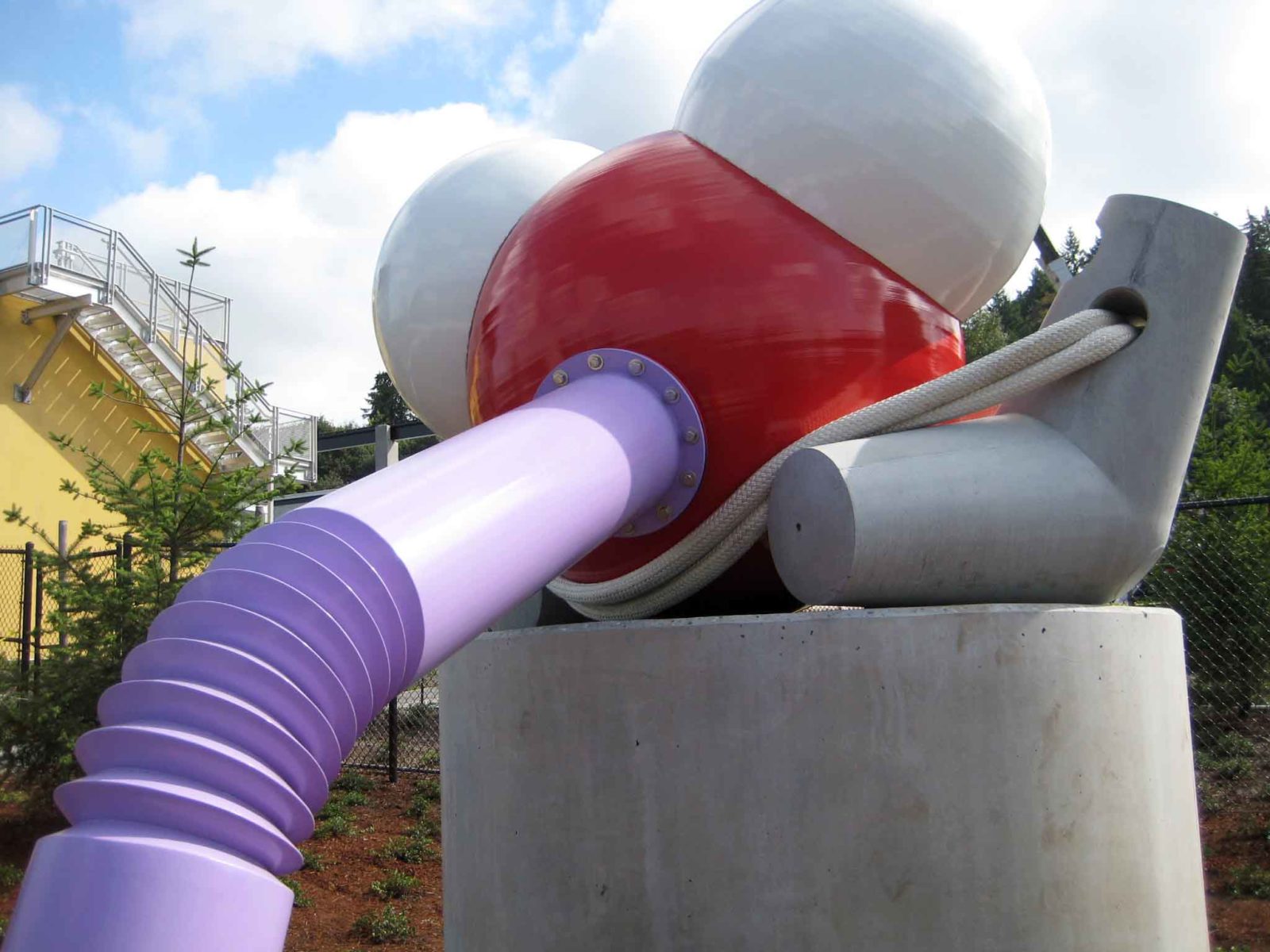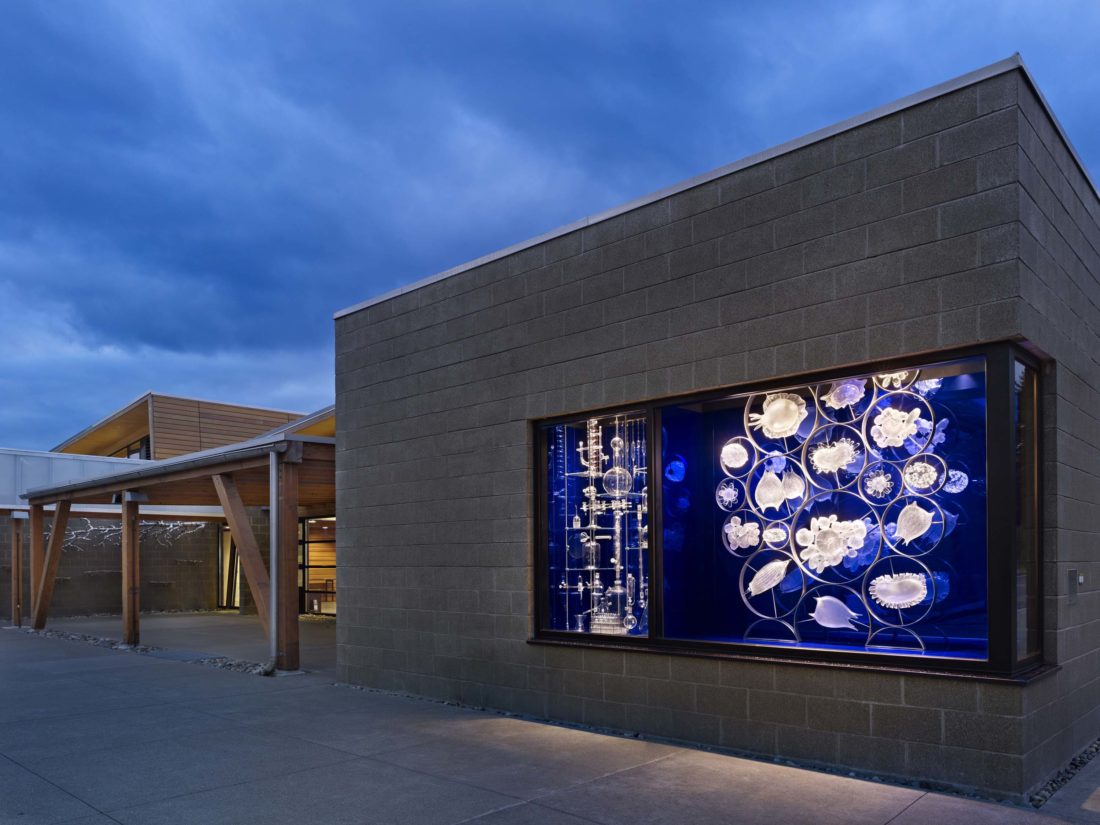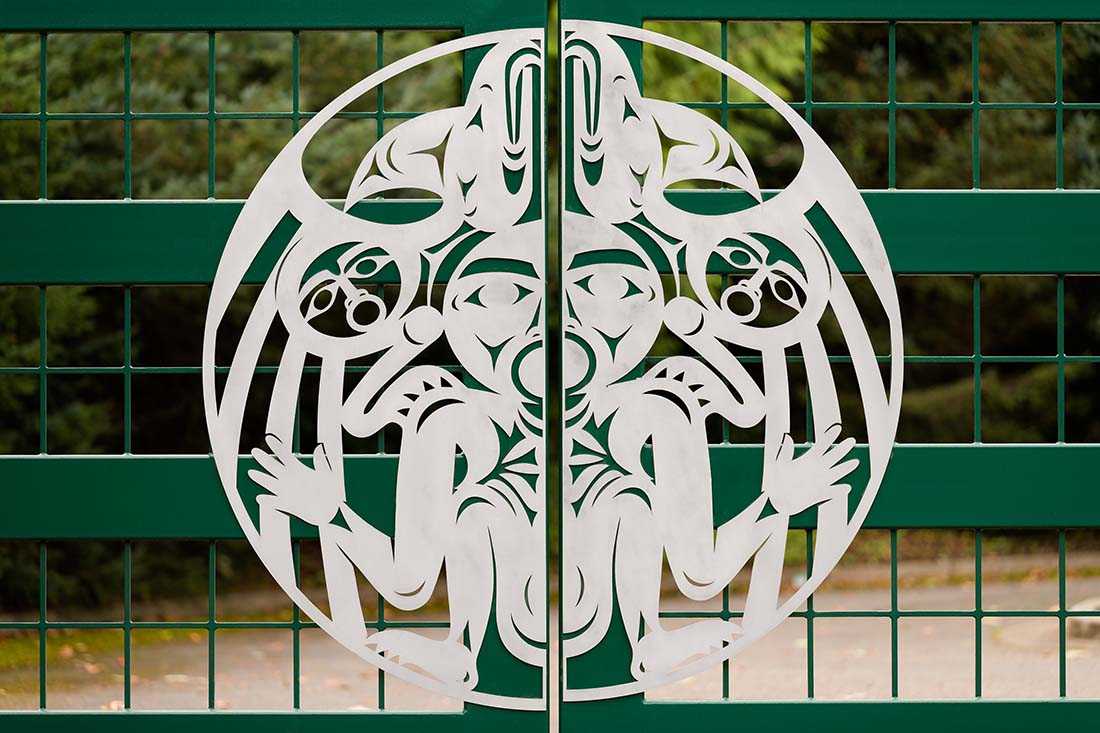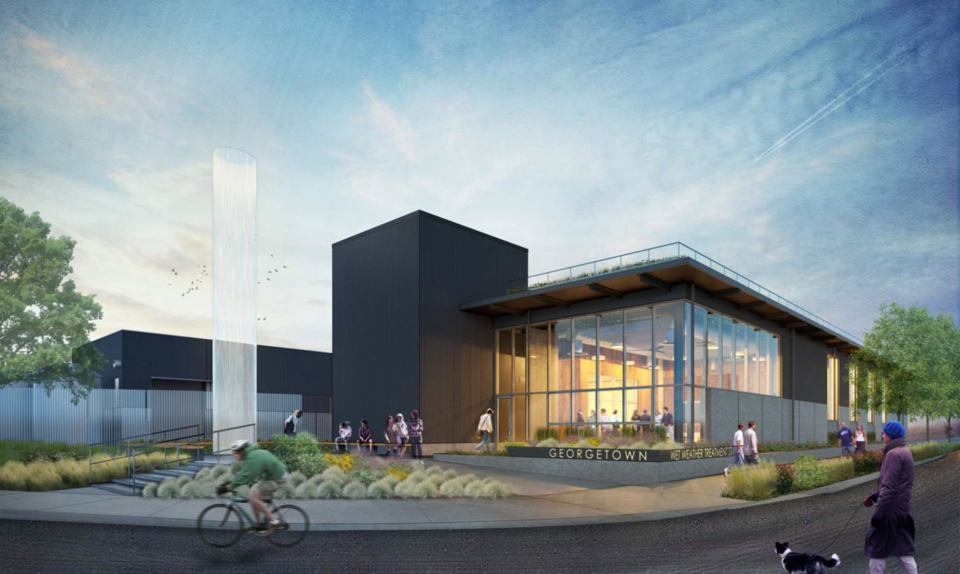A Hidden World of Water

Commissions made in partnership with King County’s Wastewater Treatment Division reveal and celebrate crucial water systems.
Inside Brightwater, one of the largest wastewater treatment facilities in the world, workers are constantly monitoring a state-of-the-art filtration system that processes many millions of gallons of wastewater every day. Around the clock, they track variations in weather and waste to ensure that the entire system is doing its job without interruption—guided in part by the sounds they hear coming from the facility’s vast pipes and machinery.
Brightwater’s work is crucial to the health of our community. This fall, artist Susan Robb will invite the public into what she calls the “hidden world” of wastewater through Deep Listening to the System, a sensory experience designed to honor the essential efforts of wastewater employees. The journey will begin with a tour of Brightwater, exploring the complex infrastructure that produces recycled water for irrigation, biosolids for organic fertilizer, and biogas for electricity. After the tour: a stop at the Brightwater Environmental Education and Community Center for a short meditation on gratitude for our natural resources and the people who help preserve them. Then comes the sound bath, a “sonorous event,” Robb says, created by a musician playing crystal singing bowls, gongs, chimes, hand drums, and shakers.
Deep Listening to the System is just one of many artworks that tell the story of Brightwater, located north of Woodinville. Following the sound bath, participants will be encouraged to walk along the site’s three miles of trails, where they can discover pieces like Andrea Wilbur-Sigo’s newly restored longhouse, a pair of iconic sculptures by Buster Simpson, laboratory and blown glass in the shape of micro-organisms by Ellen Sollod, and many others—all of them guided by a single art plan and focused on the meaning and movement of water.

Brightwater belongs to a collection of facilities operated by King County’s Wastewater Treatment Division (WTD), which protects water quality for about 1.9 million people within a 424-square-mile area. Working in partnership with WTD, 4Culture has commissioned an array of temporary and permanent artworks; together they illuminate the agency’s many feats and immense positive impacts on the county’s environment and public health. Locations include not only wastewater treatment plants but also pump stations and the sites that handle stormwater during heavy rains, which are known as Combined Sewer Overflow (CSO) treatment facilities.

At the South Treatment Plant in Renton, Donald Fels’ kinetic and mandala-like Water Plant rises from a pond and Lorna Jordan’s Waterworks Gardens infuses a series of five connected outdoor spaces with the classical design and theatricality of Italian gardens. At pump stations in Kirkland, Tukwila, Fremont, Bellevue, and Alki, works by W. Scott Trimble, Claudia Fitch, Perri Howard, Dan Webb, and Susan Point consider the lifecycle of water and the routes it travels.
Artworks at CSO control sites beautify stormwater storage and processing while raising awareness of the largely invisible CSO system itself. In West Seattle, a piece by Robert Horner uses rock gardens and rammed earth walls to mimic the path water takes to Puget Sound, and in Myrtle Edwards Park on Elliott Bay, a plaza and a collection of graphic panels by Haddad|Drugan depict underground collection, transport, and treatment operations.

New CSO control projects are also underway at the Wet Weather Treatment Station in Georgetown. This month, a series of outdoor visuals by Don Wilkison will make their debut, in conjunction with free events offering artist-designed packets of pollinator seeds that, when planted, will help the public contribute to clean water efforts. Later in the year, 4Culture will celebrate the completion of Sans façon’s Monument to Rain, a 35-foot clear cylinder that turns rain into theater. All of the works connected to the Georgetown facility were shaped by a CSO Art Plan by Sans façon, which provides a curatorial framework for future artworks and amenities at these locations.
A forthcoming project by Erik Carlson at the Rainier Valley Wet Weather Treatment Station in Beacon Hill/Mount Baker focuses specifically on one of five themes in Sans façon’s plan: “The Intangible,” the poetic material that can’t be conveyed in charts, graphs, numbers and spreadsheets. Carlson considers how wastewater engineers work with the stuff of poetry—such as wind, weather, and time—but, he says, “This poetry itself is neither obvious nor easily accessible to the outsider’s eye, lying submerged as it does within a sea of data.” His text-based artwork, Water Log, uses phrases drawn directly from regional news sources to write open-ended stories about the role of water in our everyday lives and imaginations.
Also on the horizon? A pair of commissions that were recently awarded to Timothy White Eagle and Laura C. Wright, who will create temporary artworks connected to the West Duwamish Wet Weather Storage Facility.
